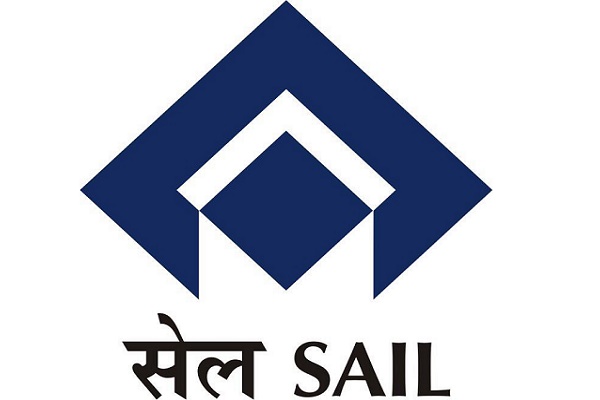IT Services : CTSH-a nice surprise by Kotak Institutional Equities

CTSH—a nice surprise
CTSH delivered flat revenues sequentially, above the higher end of its guidance range, in the March 2024 quarter. The surprise was led by robust growth in communications, media and technology (CMT), and healthcare. Strangely, the company kept the wide revenue guidance band of 2% decline to 2% growth for CY2024 unchanged. It did highlight a broader weak discretionary spending environment. Read-through for others: (1) the discretionary spending environment is weak and (2) the company is a bit optimistic on BFS, reflecting its own improvement in execution and market share defense.
Delivers revenues above the guidance range led by CMT and healthcare
CTSH reported flat revenues on a sequential basis at US$4.76 bn, above the upper end of its guidance. Revenues declined 1.2% yoy in c/c. Acquisitions contributed 70 bps to revenues. The surprise was led by CMT (a weak vertical for the industry), with sequential and yoy revenue growth of 2.7% and 5.2%, respectively. The healthcare vertical held up well and grew 1.4% qoq, though it declined 1.3% yoy (in c/c). Products reported a sharp decline of 2.6% qoq, though it grew 1.3% yoy. Finally, financial services declined 0.7% qoq and 6.2% yoy. Adjusted EBIT margin expanded 50 bps yoy, helped by a sharp 130 bps decline in SG&A spends. SG&A expenses were down to 16.1% of revenues and declined both qoq and yoy in absolute terms. Adjusted EPS stood at US$1.12/ share, a marginal yoy growth of 1%.
Annual revenue guidance unchanged
The wide revenue guidance band of -2% to +2% was unchanged, which is surprising, in our view. The guidance includes up to 100 bps contribution from acquisitions. Management attributed the wide band to a challenging discretionary spending environment. Achieving the upper end of the guidance band requires some pickup in discretionary spending, additional business in case large deals are executed well, some upside of the inorganic component (30 bps) and/or rebadging-type large deals. The revenue guidance for 2QCY24 stands at US$4.75-482 bn (-2.5 to -1% yoy in c/c), implying flat to 1.5% qoq growth in revenues. The math for achieving the upper end of guidance is CQGR of 3.3% in 3Q and 4Q and the lower end is 0.8% qoq decline in 3Q and 4Q. The midpoint of the guidance band appears a lot more realistic, in our view. Adjusted EBIT margin guidance of 15.3-15.5% (20-40 bps expansion) remains unchanged.
Surprisingly weak booking number
TTM bookings stood at US$25.9 bn, representing 1% growth yoy and on a downward trajectory in the last three quarters. We found the decline a tad surprising, noting the uptick in large-deal activity—the company announced 8 large deals, with a TCV of more than US$100 mn versus just 4 the same time last year. Five of the eight deals are expansion + renewals, with the balance presumably only renewals. The environment for smaller-ticket/discretionary deals of up to US$10 mn continues to be weak. Client focus is on efficiency and cost take-outs. In our view, ACV could have declined on yoy comparison.
Read-through for the rest of the IT sector
The wide guidance band for CY2024 highlights continued challenges in discretionary spending. Management indicated uncertainty in discretionary spending, which is captured in the wider-than-usual revenue guidance band. CTSH’s success in large deals have not gone unnoticed. The easy share gains of competitors, at the expense of CTSH, has reduced, making the market a lot more competitive.
A little more upbeat on BFS
Management sounded a bit more upbeat on BFS, which is 60% of the overall financial services portfolio. The company attributed the optimism to interventions made to improve business that included a leadership refresh and the reorganization and expansion in service offerings to fulfill demand opportunities across sub-segments such as mainframe modernization for insurance companies and cost take-out for regional banks. The strengthening of the BFS portfolio and better share defense against competitors should aid in a gradual recovery on a low base. Note that BFSI revenue in 1QCY24 was 9.4% lower than revenue in 1QCY22.
Better performance in healthcare aided by Europe and RoW
The healthcare vertical’s performance has been weak for the last several quarters, likely impacted by (1) weak client spending and (2) share loss to peers. Cognizant serves several sub-segments, including payers, life sciences, CROs, etc. We believe that the negative impact was higher on the payers business. The vertical grew 1.4% qoq, aided by healthy growth in Europe and RoW geo.
Key highlights from the earnings call
* Macro outlook. Discretionary spending is muted. The outlook has not improved from 1QCY24. The impact is the highest on BFSI. The healthcare segment is bearing significant stress due to macro and vertical-specific issues. The technology sector is impacted by focus of clients on reducing cost. Funding for innovation is impacted by macro uncertainty. CTSH will be prepared when discretionary spending returns. There is resilience among utility customers, automotive vertical and ERD services.
* TCV. There is softness in US$0-20 mn deals which are discretionary-led. In large deals, the duration of deals is longer. Revenue realization is over a period of time. Deals won in 2023 will aid revenue in 2024. Expect incremental revenue addition from large deals in 2025 over 2024. Large deals do have a downside impact of lower pricing compared to the prior state of sourcing, but is a part and parcel of the market dynamics.
* Guidance. The upper end of the guidance takes into account a few factors: (1) recovery in discretionary spending in 2HCY24, (2) upside from surround services in large deals, (3) higher inorganic component (30-40 bps potential) and (4) faster ramp-up in case of rebadging deals.
* Reduced leakage due to vendor consolidation. Before Ravi’s tenure as CEO, CTSH was losing in vendor consolidation mandates. Under him, it has reduced this leakage. CTSH is on the winning side on consolidation decisions more often in the last fifteen months.
* CMT. The CMT vertical’s growth was aided by large deal wins and acquisitions, which offset weak discretionary spending.
* Delivery. NPS has increased significantly.
* Gen AI. The company has 450+ early client engagements in gen AI and 500+ engagements in the pipeline. Key use cases are in: (1) customer and employer experience, (2) content summarization, (3) content generation and (4) leveraging gen AI to accelerate innovation and technology development cycles. Clients are assessing PoCs and RoI. The monetization opportunity is when PoCs go into scaled production. This will expand the work related to managing AI platforms and data infrastructure.
* Gen AI impact on software development. Gen AI can improve developer productivity and increase tech intensity in organizations.
* Google Cloud. The collaboration will help in using Gemini for (1) increasing productivity in software development and (2) internal efficiencies.
* Margin expansion. Aided by cost optimization measures.
* Inorganic contribution. 1QCY24 yoy growth includes 70 bps from acquisitions. 100 bps of M&A is included in CY2024 revenue growth guidance.
* Margins. The majority of savings from the next-gen program will be reinvested in the business. Expect 2QCY24 margins to be close to 1QCY24. Next-gen cost savings and increase in utilization could be impacted by headwinds from the initial ramp-up of large deals.
Above views are of the author and not of the website kindly read disclaimer




















